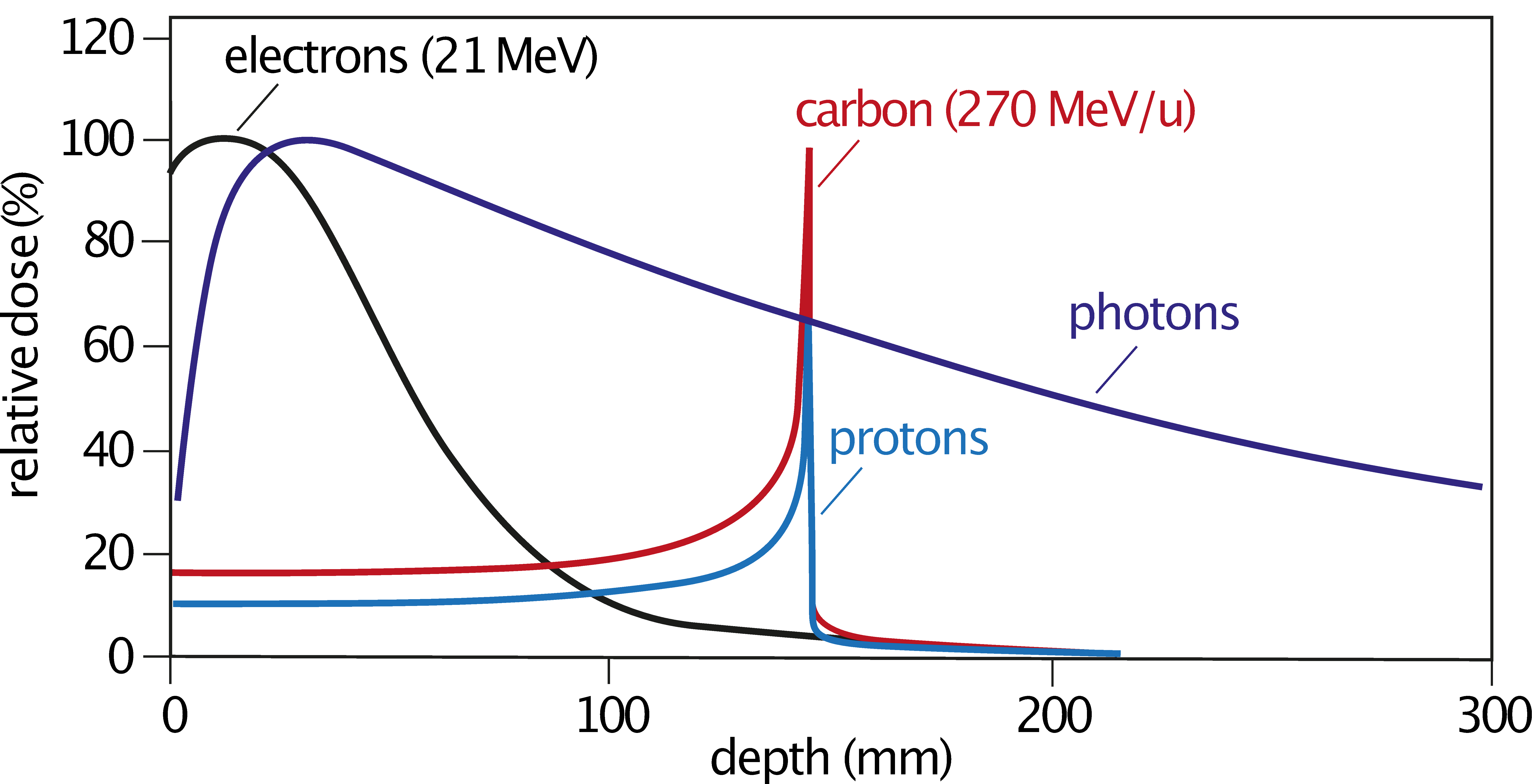
Proton Beam Therapy
Welcome to The Jolly Shrewdness: the UCL HEP Proton Beam Therapy research group of Prof. Simon Jolly.
Modern cancer treatment is largely a combination of 3 techniques — chemotherapy, radiotherapy and surgery — each of which has associated advantages and drawbacks. Conventional radiotherapy utilises X-rays with energies from 6 MeV to 18 MeV to irradiate cancerous regions of the body from multiple directions: the most modern variants of Intensity Modulated RadioTherapy (IMRT) provide a continuous intensity modulated X-ray beam through a full 360° arc, maximising the dose to the tumour whilst minimising the dose to the surrounding tissue.
The drawback of conventional radiotherapy is the amount of dose delivered outside the desired treatment region. At the energies used for radiotherapy, the peak energy loss for photons occurs within a couple of centimetres of the surface of the skin, with a slow reduction in energy loss as a function of depth. This unfavourable dose distribution is balanced somewhat by the multiple beam approach used in IMRT, but still leads to significant dose deposition in otherwise healthy tissue. This has particular significance in the treatment of deep-lying tumours in the head, neck and central nervous system, particularly for children whose bodies are still developing and are particularly susceptible to long-term radiation damage.

Proton Beam Therapy (PBT) is a more effective alternative to conventional radiotherapy, where high energy protons (60-250 MeV) are used in place of X-rays. The advantage of PBT is a consequence of the markedly different dose deposition profile of protons: as a result of the Bragg Peak most of the energy is deposited in the last few millimetres of the proton path. This allows a precise tuning of the delivered dose through appropriate selection of the proton beam energy and leads to much lower doses of radiation outside the target volume. Until 2018 the UK's only operational PBT centre was the Clatterbridge Centre for Oncology on the Wirral, the world's first hospital-based PBT centre that opened in 1989. With a 62 MeV cyclotron and a penetration depth less than 4 cm, treatment is limited to eye tumours.
However, in 2012 the NHS undertook the development and construction of new high energy centres to provide proton beam radiotherapy up to 250 MeV: The Christie Hospital in Manchester that began treating patients with PBT in 2018; and University College Hospital in London (UCLH) that treated its first patient in late 2021. The aim is to treat a total of 1,500 patients a year, primarily those with the most challenging tumours of the head and neck and the central nervous system, including a high proportion of children and young adults.
To support these new treatment centres, UCL is engaged in a number of research programmes within both High Energy Physics and the UCL Dept. of Medical Physics to improve the quality of proton therapy treatment.
More information on the current proton therapy research programme within the High Energy Physics group is available on the HEP Proton Beam Therapy Wiki.
For more information on Proton Beam Therapy research at UCL, please contact Prof. Simon Jolly.
